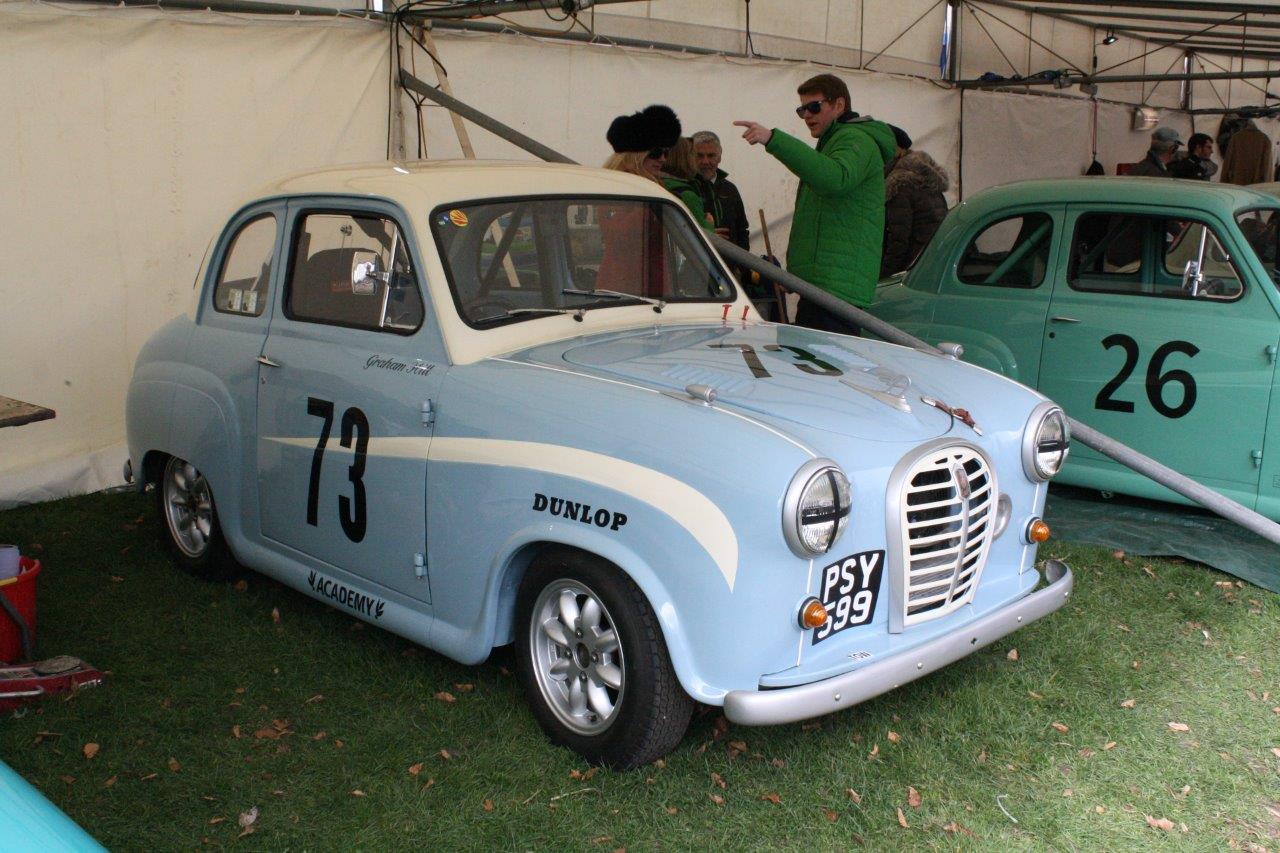-
Insurance
InsuranceAbout our productsLearn about insuringGet a quote Get current values, historical values, model history and more.
-
Valuation
ValuationHagerty valuation toolLook up a vehicle value Get current values, historical values, model history and more.
-
Events
EventsHagerty official eventsHagerty ClubhouseEvent calendar
-
Entertainment
EntertainmentMore to explore
- Portal login
1958 Austin A35
Countryman Estate 0.9 L
Vehicle values by condition
Fair
Condition 4
£5,300
#4 cars are daily drivers, with flaws visible to the naked eye. The chrome might have pitting or scratches, the windshield might be chipped.
Good
Condition 3
£7,900
#3 cars could possess some, but not all of the issues of a #4 car, but they will be balanced by other factors such as a fresh paint job or a new, correct interior.
Excellent
Condition 2
£9,500
#2 cars could win a local or regional show. They can be former #1 cars that have been driven or have aged. Seasoned observers will have to look closely for flaws.
Concours
Condition 1
£12,100
#1 vehicles are the best in the world. The visual image is of the best car, unmodified, in the right colours, driving onto the lawn at the finest concours.
Insurance premium for a
1958 Austin A35 Countryman Estate 948
valued at £7,900
£110.34
/ year*
History of the 1956 - 1962 Austin A35

1956 - 1962 Austin A35
Austin A30 & A35 1951 to 1962
Making their bow in late 1951 at the Earls Court Show Motor Show, the Austin A30 was both the company's first new post-war small saloon and their first car to feature monocoque construction. The body choices ranged from two and four door saloons to a three-door estate car, all seating four and all with the engine driving the rear wheels. The range was updated in 1956 as the A35, with the saloons being discontinued in 1959 and the estate in 1962.
The Austin A30 was originally billed as the 'Austin Seven' - although this name was short-lived- and was initially available only in four-door saloon form. The suspension was via independent coil springs at the front with a live axle and semi-elliptic leaf springs at the rear. Brakes were hydraulic drums at the front and rod operated at the back and there was a floor-mounted lever for the four-speed gearbox. A heater, passenger sun visor and a second windshield wiper were all optional extras. In October 1953, the A30 gained a new instrument dial and improved seats plus the option of a two-door saloon body. The Countryman estate, with its faux-wood painted side panels, was introduced in August of the following year,
In September 1956, the Austin A30 was replaced by the Austin A35, as recognisable by its metal radiator grille, enlarged rear screen and flashing indicators on the saloons; the Countryman retained its semaphore trafficators but lost its pseudo-timber decorations. There was also a larger engine married to a remote-control floor gear lever change with improved ratios. Production of the Austin A35 saloons ceased in April 1959, the Countryman continuing until February 1962.
The Austin A30's engine was an 803cc S4 OHV unit and the Austin A35 had a 948cc S4 OHV plant. Both models had Zenith carburettors and four-speed transmission, with no synchromesh on 1st gear.
Even in the 1950s the Austins were seen as 'compact' - for a time the A30 was the narrowest new car in the UK - but their suspension is well-sorted, the high-geared steering is precise and the diminutive engine very willing The A35, with its greater power and more precise gearchange, is the better of the two for long distance travel and indeed when new it was raced by Graham Hill. Some owners fit the 1,098cc S4 OHV version of BMC A-Series engine for extra power while the brakes of the A30 are not renowned for their efficiency but these can be replaced by Sprite/Midget front discs.
The first generation 1952 - 1953 A30, as recognisable by their circular speedometer, as is the A30 Countryman. Corrosion was a major issue with the Austin A30 and A35 line-up, so the edges of the front wings, the front panel, the inner wings, rear spring hangers and the boot floor should all be examined for corrosion. Early A30 gearboxes are known to wear and the condition of the brake master cylinder and front kingpins should be carefully checked. the supply of mechanical parts is good and second-hand body panels can be found, although doors for the two-door are easier to locate than those for the four-door saloon.
The principal rivals to the A30/A35 were the Morris Minor Series II and 1000 (which shared engines with the Austin), the Ford 100E Popular and Prefect and the Standard 8/10 range.
All 1958 Austin A35 body types
| Year | Make | Model | Submodel | Body Type | Engine size | Average value |
|---|---|---|---|---|---|---|
| 1956 | Austin | A35 | Base | 2dr Saloon | 0.9 L | £ 4,200 7,000 8,700 14,000 |
| 1956 | Austin | A35 | Base | 4dr Saloon | 0.9 L | £ 3,700 6,700 8,100 10,700 |
| 1956 | Austin | A35 | Countryman | Estate | 0.9 L | £ 5,300 7,900 9,500 12,100 |
Hagerty Newsletter
Get your weekly dose of car news from Hagerty UK in your inbox

ADVERTISEMENT